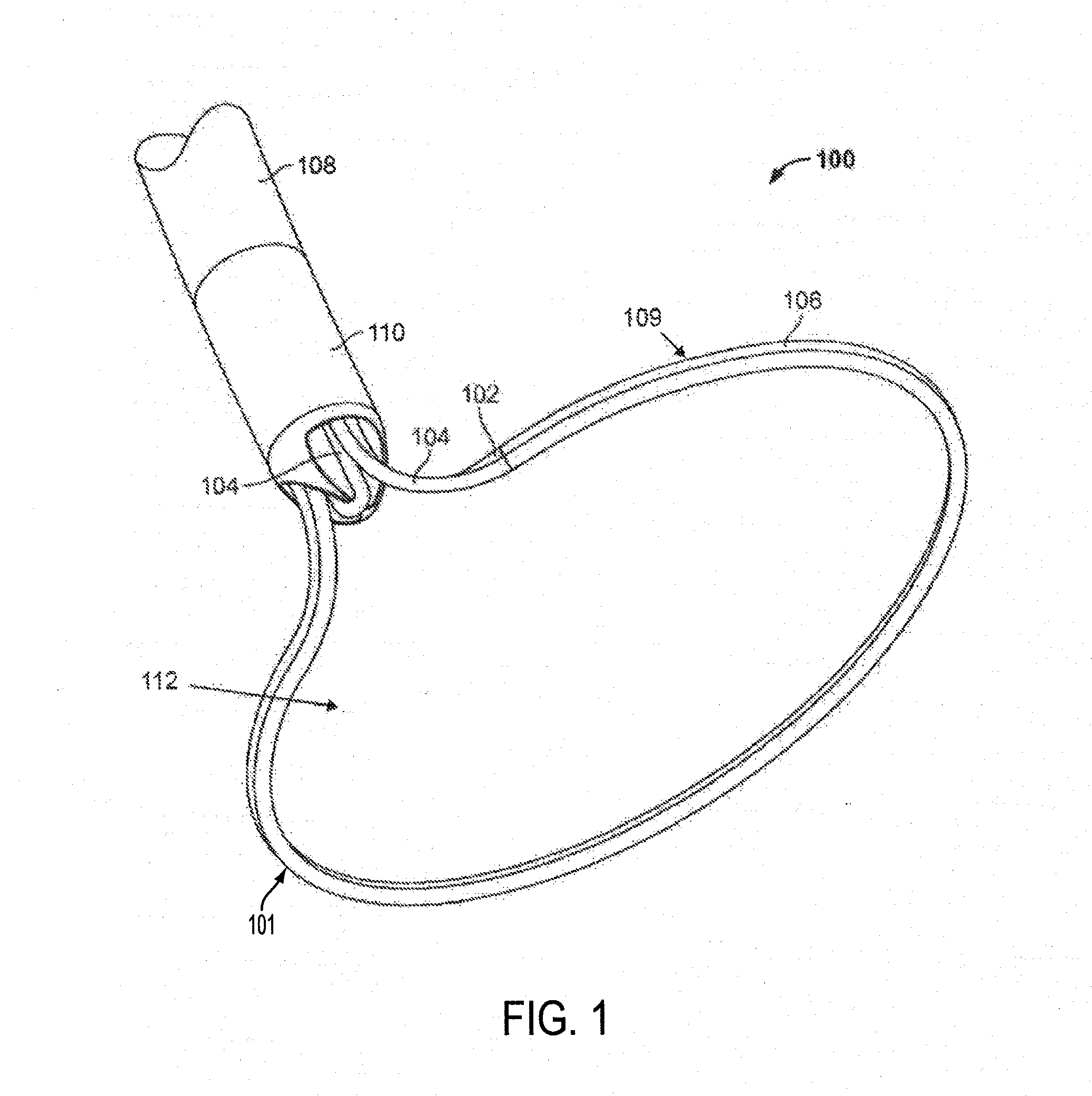Devices and methods for left atrial appendage closure
a technology of appendage closure and device, which is applied in the field of systems and methods for closing tissue, can solve the problems of atrial fibrillation, thrombosis or clot formation in the appendage of the left atrium, and affect millions of patients
- Summary
- Abstract
- Description
- Claims
- Application Information
AI Technical Summary
Benefits of technology
Problems solved by technology
Method used
Image
Examples
Embodiment Construction
[0036]Described here are systems and methods for closing the left atrial appendage. Generally, the systems and methods are configured to ablate or abrade left atrial appendage tissue before, during, or after the left atrial appendage closure procedure. In some instances, the left atrial appendage tissue may be ablated to electrically isolate the left atrial appendage from the heart. For example, for patients suffering from atrial fibrillation, electrical isolation of the left atrial appendage may limit the ability for asynchronous heart signals generated in the left atrial appendage to reach surrounding heart tissue. Additionally or alternatively, ablation or abrasion of left atrial appendage tissue may induce an inflammatory response from the left atrial appendage tissue, which may result in healing that may result in tissue fusion or otherwise help maintain closure of the left atrial appendage.
[0037]Generally, the left atrial appendage may be closed using one or more of the system...
PUM
 Login to View More
Login to View More Abstract
Description
Claims
Application Information
 Login to View More
Login to View More - R&D
- Intellectual Property
- Life Sciences
- Materials
- Tech Scout
- Unparalleled Data Quality
- Higher Quality Content
- 60% Fewer Hallucinations
Browse by: Latest US Patents, China's latest patents, Technical Efficacy Thesaurus, Application Domain, Technology Topic, Popular Technical Reports.
© 2025 PatSnap. All rights reserved.Legal|Privacy policy|Modern Slavery Act Transparency Statement|Sitemap|About US| Contact US: help@patsnap.com



